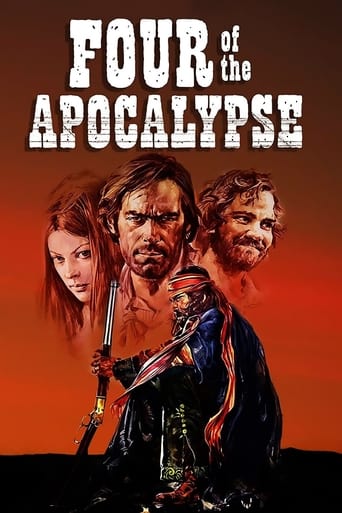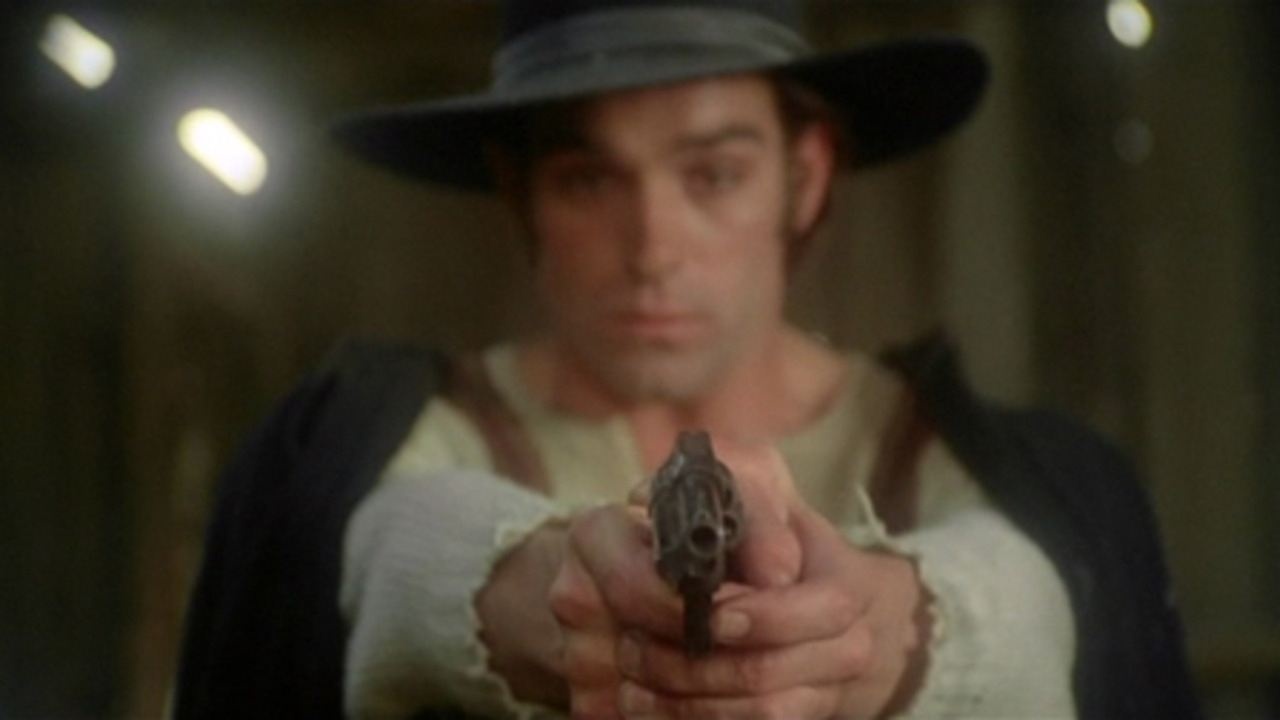jimlacy2003
(Only minor spoilers if at all here, just wanted to warn you) I saw this movie listed as one to see out of Lucio Fulci works so I had to go out and find it.Now it's pretty rough at a lot of parts; Raw, violent, but then not all that unusual for movies of the period 1975' and for Westerns in general as there is often a major (read violent) revenge element(s).Some neat things about this movie. I actually live close to some of the the named areas of the film (although the actual movie was filmed in Spain, Italy and Austria). Altaville, California is an actual small old mining town. It's just past historic Angels Camp, California. While there is not much historic buildings left (the old school house comes to mind), unlike Angels Camp that has quite a bit remaining. Also "Poker Flat" is a near by town (very little remaining) and I'm sure there are others.All these real locations shouldn't be that surprising though as Bret Harte is a well known and prolific writer who lived here. He's up there with the likes of Mark Twain (who also lived in the area for a while). Many locations here in this area are named after him (Harte). While doubtful the events from the movie are actual, undoubtedly he based them on real people as are the locations real.One of the best scenes, one of the most real, was towards the end when the baby was delivered. As it was true back in the gold rush days there were very few women and children here. I'm sure the whole town(s) would have been delighted at the blessed birth of a child. It was a touching moment and added a nice contrast between the over the top violence and roughness; as were the scenes where the protagonist learned to Love and protect the poor misguided girl. Maybe a lot of the men of the old west were rough & tough characters (living out in the elements, working long hard hours) but they were still human. This is the greatness of Lucio Fulci to bring out these extremes. Great classic Western film, highly recommended.
JasparLamarCrabb
It's not really saying something, but this features some of Lucio Fulci's best direction. His work here is quite good. It's the story of four disparate criminals driven out of town by a crooked sheriff. They run into some holy rollers, some brutal outlaws and lunatic sharpshooter Tomas Milian. Fabio Testi is a gambler, Lynne Frederick is a whore, Michael J. Pollard is a drunk and Harry Baird is a ghost seeing nut. It's a brutal, uncompromising spaghetti western, with so-so dubbing and some fine acting by Testi, Fredrick and the great Milian. As with many films of this ilk, the action is marred by some silly pop songs played at various intervals. Not bad.
lastliberal
Four strangers meet in the Salt Flat jail, and are bonded out by one, a gambler named Stubby (Fabio Testi). The other members of the group in Lucio Fulci's western are Bunny (Lynne Frederick), a pregnant prostitute, Clem (Michael J. Pollard), a drunk, and Bud (Harry Baird), who is apparently a few beers short of a six pack.They escape town and head 200 miles away to start over when they are met by Chaco (Tomas Milian), who is pretty handy with a gun, but appears to be more handy with a knife when he is skinning the Sheriff.Chaco feeds them an hallucinogen and ties them up. He proceeds to rape Bunny and leave them for dead.The journey continues and the party dies one by one until there is only one left - one bent on revenge.Good acting by Testi and Milian. The only drawback was the fact that I watched the American version, which had almost 20 minutes cut from the original.
Brandt Sponseller
Although by standard genre conventions, I Quattro dell'apocalisse (Four of the Apocalypse) is definitely a (spaghetti) western, in many ways it is just as terrifying as any of director Lucio Fulci's more famous horror flicks.The story centers on four people who end up together by happenstance--they are all jailed in a small Utah town. After most of the town is massacred, the four are set free and try to make their way together to a city 200 miles distant. Although adapted from two Bret Harte stories, "The Luck of Roaring Camp" and "The Outcasts of Poker Flat", Fulci and screenwriter Ennio De Concini amped up the violence, added a character, Chaco (Tomas Milian) probably influenced by Charles Manson (and prescient of Johnny Depp's Jack Sparrow portrayal in a way that must be more than happenstance), and embedded the Biblical "Four Horsemen of the Apocalypse" connection.In the Bible, the four horsemen represent the destructive phenomena of pestilence, famine, war and death. Here, there's more of a "seven deadly sins" flavor, as the four main characters represent greed/gambling, prostitution, alcoholism and insanity. Adding Chaco to the mix flips traditional morality on its head, as the four protagonists must bond as they try to help each other survive.The penultimate act is subtly mystical--it's almost as if the remaining protagonists have been temporarily transported to heaven, although the greatest tragedy occurs in this setting, too. Fulci slyly transforms the environment during this section, a change that actually begins to occur during the previous act, with a heavily symbolic downpour.



 AD
AD




